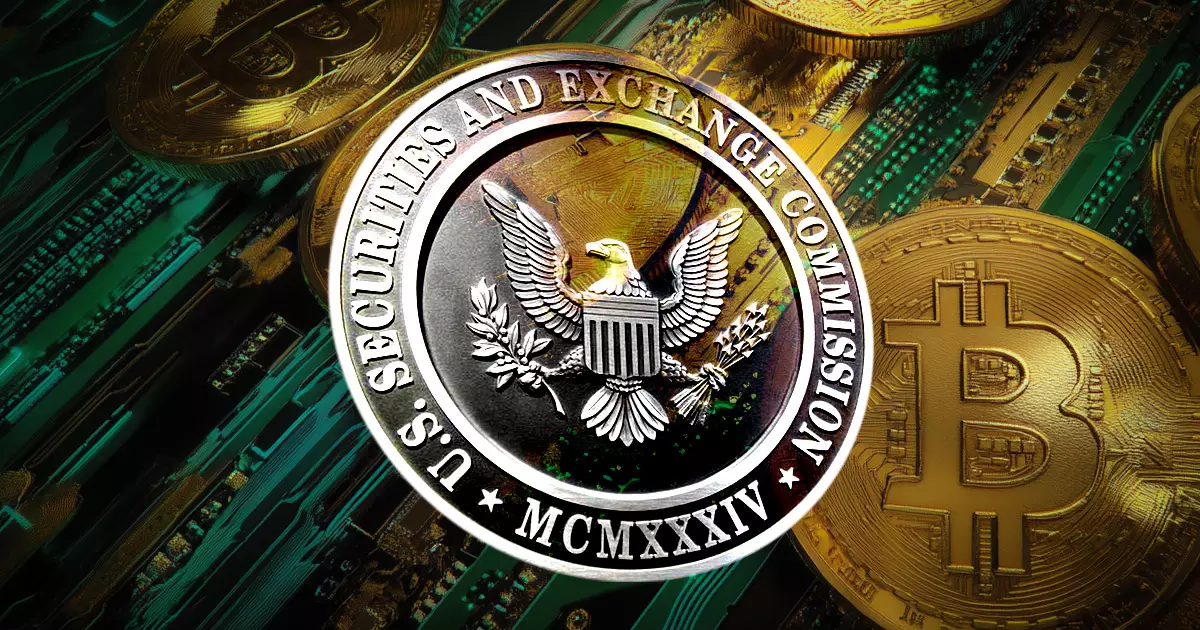The evolving landscape of cryptocurrency regulations is increasingly characterized by interplays between authoritative bodies and key players in the financial ecosystem. Recently, the U.S. Securities and Exchange Commission (SEC) engaged in discussions with BlackRock and the Crypto Council for Innovation’s (CCI) Proof of Stake Alliance. These meetings weren’t simply routine engagements; they represented a crucial juncture as the SEC navigates a rapidly changing crypto environment, showing a willingness to embrace input from the very institutions that aim to shape its future. The involvement of industry stalwarts like BlackRock underscores the complexities of marrying traditional financial mechanisms with emerging technologies, raising critical questions about efficacy and consumer protection.
The SEC’s role in this dance is as pivotal as it is precarious. In its attempt to establish regulatory clarity for crypto exchange-traded products (ETPs), the commission must balance between fostering innovation and ensuring investor safety from the volatility that characterizes the crypto sphere. This push for regulatory clarity is not merely a protective measure; it demonstrates an acknowledgment of cryptocurrency’s significant presence in the financial markets, highlighting both its challenges and potentials. As institutions invest heavily in digital assets, regulators are gradually shifting from an adversarial posture to one that is more consultative—a nuanced approach that could either encourage or stifle innovation.
The Mechanics of In-Kind Redemptions
During strategizing discussions with BlackRock, the SEC evaluated the mechanics of in-kind redemptions—a process where investors can exchange their shares for the underlying assets. This approach could provide a pathway to mitigate the inherent risks associated with crypto ETPs. However, questions abound regarding how these mechanisms will function in a decentralized environment, where assets can be illiquid and regulatory frameworks remain vague. BlackRock presented existing workflows, indicating a desire to bring traditional structures into the crypto realm. This transitional strategy may benefit institutional investors most, but it risks alienating smaller players and retail investors, who might find these products inaccessible or convoluted.
In this context, the SEC’s consideration of these models can be seen as both progressive and regressive. While on one hand, it acknowledges the legitimacy of cryptocurrency ETPs, on the other, reliance on legacy systems could trap innovation within traditional methods that are ill-suited for a digital-first world. The efficacy of these solutions hinges on how diligently the SEC listens to industry concerns and how robustly it acts upon them.
Staking: A Double-Edged Sword
Central to the discussions was the topic of staking—a mechanism that can yield rewards but also introduces additional layers of complexity and risk. Representatives from the Proof of Stake Alliance underscored the importance of staking to projects like Ethereum and Solana, which rely on it not just for functionality, but also for sustaining investor interest. The SEC’s approach to this critical aspect will shape the profitability horizon for potential ETPs. Legal models discussed ranged from custodial solutions to third-party validators, complicating the landscape with mixed messages about responsibility and risk.
The risk profile of staking as it pertains to ETPs is vital. If not addressed properly, stifling regulatory measures could dilute investor returns or inhibit market growth. The potential for user participation in proof-of-stake networks and the responsibilities of validators moves to the forefront of regulatory consideration, signaling an acknowledgment of the decentralized nature of these assets. However, this complexity requires scrutiny—not only to safeguard investors but to preserve innovation in a sector that thrives on disruption and resilience.
The SEC: A Gatekeeper in the Innovation Landscape
The SEC’s deliberations with industry leaders mark a turning point; they represent a fragile yet necessary collaboration for the sector’s future. While the SEC has historically taken a defensive stance towards innovations that challenge traditional financial paradigms, recent interactions show an evolving perspective—one progressive enough to entertain the mixed dynamics of speed and caution in regulatory practices. The outcome of these discussions could provide the scaffolding for a regulatory framework that is both forward-looking and compliant.
However, one cannot help but question how genuinely open the SEC is to transformative ideas. Caution, when taken too far, risks creating a bottleneck that hinders growth. There is a palpable tension between the desire to innovate and the mandate to regulate that could undercut the American ethos of entrepreneurship and progress. Thus, the path forward requires a delicate balance—one that respects investor security while allowing the next wave of technological advancement to unfold with vigor. The success of these regulatory conversations will ultimately depend on how effectively they can marry innovation with oversight, a challenge that could define the SEC’s legacy in this emergent financial domain.


Leave a Reply